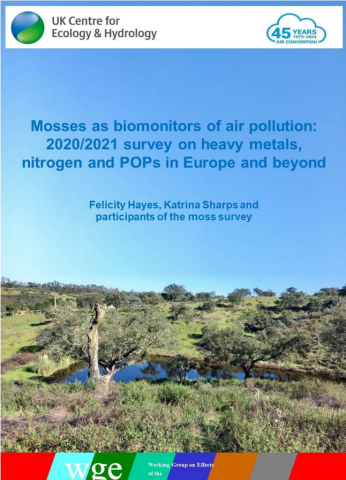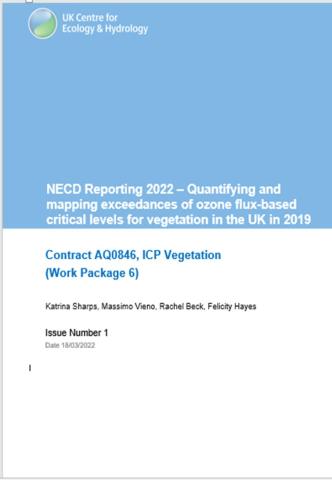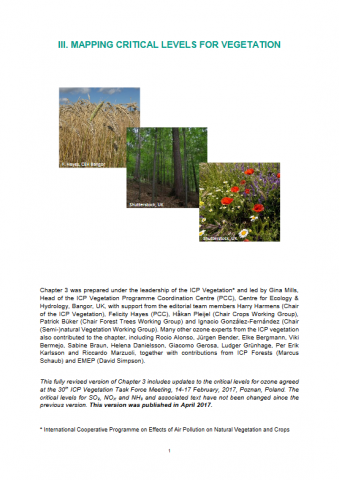"Ozone pollution: A hidden threat to African crop production"
As part of the NERC-funded Official Development Assistance project ‘SUNRISE’ (https://www.ceh.ac.uk/sunrise), scientists of the ICP Vegetation Coordination Centre at CEH Bangor held an ozone pollution training workshop for African scientists from 24th – 26th September 2019. Five scientists, with a wide range of expertise, attended from Kenya, Senegal, South Africa and Tanzania. The workshop had 3 key aims:
1) Raise awareness of the threat of ozone pollution to food production in Sub-Saharan Africa.
2) Improve knowledge of the identification of ozone impacts on crops, assessment of areas at risk and present options for mitigating impacts.
3) Exchange knowledge and tools for stakeholder engagement (e.g. crop breeders & producers, agricultural extension workers, policy makers, small-hold farmers).
The workshop consisted of a series of activities and presentations over 3 days. The first day began with a background presentation on ozone pollution, including some information on ICP Vegetation. Then we shared some results from our experiments on the impacts of ozone on African crop species and varieties (including pearl and finger millet, wheat and common beans) in the CEH Bangor solardomes, conducted as part of the SUNRISE project. Lastly, we presented the ICP Vegetation ozone injury app (https://icpvegetation.ceh.ac.uk/get-involved/ozone-injury/record) and discussed the key symptoms of visible ozone injury on crops and how these can be distinguished from other causes of leaf damage such as viruses, fungal infections and pests and diseases. In the afternoon, we visited the CEH ozone exposure facilities (solardomes and free-air exposure) at Abergwyngregyn (https://www.ceh.ac.uk/our-science/research-facility/solardomes-and-ozone-field-release-system). We showed the workshop participants around the site and were able to demonstrate examples of visible ozone injury on a variety of different crop species.
On the second day, we presented an introduction to the DO3SE model developed by SEI York ( https://www.sei.org/projects-and-tools/tools/do3se-deposition-ozone-stomatal-exchange/), which is used to calculate ozone fluxes into leaves. We then discussed options for mitigating ozone impacts on crops and possible interactions between ozone and climate change. In the afternoon, there was a session on stakeholder engagement and knowledge transfer, including activities on designing a stakeholder event. The workshop participants were able to share their experience in working with stakeholders and running events for various projects for their own organisations, which was very useful. For example, using stakeholder mind maps to identify key stakeholders, and also the use of the theatre forum to communicate messages, for example, climate-related risks, to a variety of stakeholders.
On the final day, we demonstrated how modelled ozone can be used to quantify ozone impacts on crops at varying scales (UK – global) using GIS mapping. Workshop participants shared their local knowledge on where and when particular crop species grow in their countries, which will be very useful for improved mapping of crop growing areas at risk from adverse impacts of ozone pollution on crop production. We finished with participants presenting information on their work and organisations, including breeding crop varieties with desirable characteristics based on farmers’ needs, (e.g. drought resistance), and working with the Plantwise network (https://www.plantwise.org). Plantwise works to increase food security for small-hold farmers by reducing crop losses (‘Lose less, feed more’), running plant clinics with trained plant doctors who diagnose problems with farmers’ crops and offer recommendations on how to manage them.
We all enjoyed the workshop and found it was a very useful exercise in two-way knowledge exchange. We shared our knowledge on the impacts of ozone on crop production and the African participants shared their extensive knowledge on many aspects of crop production in Africa and stakeholder engagement.
Our next steps include working together to collect measurements of ozone concentration from agro-ecological zones across Sub-Saharan African, to gather evidence of visible ozone injury in Africa using the ozone injury smartphone app and to further raise awareness and improve knowledge on ozone impacts on crops in Africa.
For more information on the organisations of the workshop participants, see:
Centre for Agriculture and Bioscience International (CABI):
https://www.cabi.org/ and https://www.plantwise.org
International Crops Research for the Semi-Arid Tropics (ICRISAT):
Tanzanian Agricultural Research Institute (TARI):
http://www.nextgencassava.org/institution/tanzania-agricultural-research-institute/
Institut Sénégalais de Recherches Agricoles (ISRA):
North-West University, South Africa:
http://natural-sciences.nwu.ac.za/biological-sciences/about-us
For more details of the NERC-funded SUNRISE project, see https://www.ceh.ac.uk/sunrise


